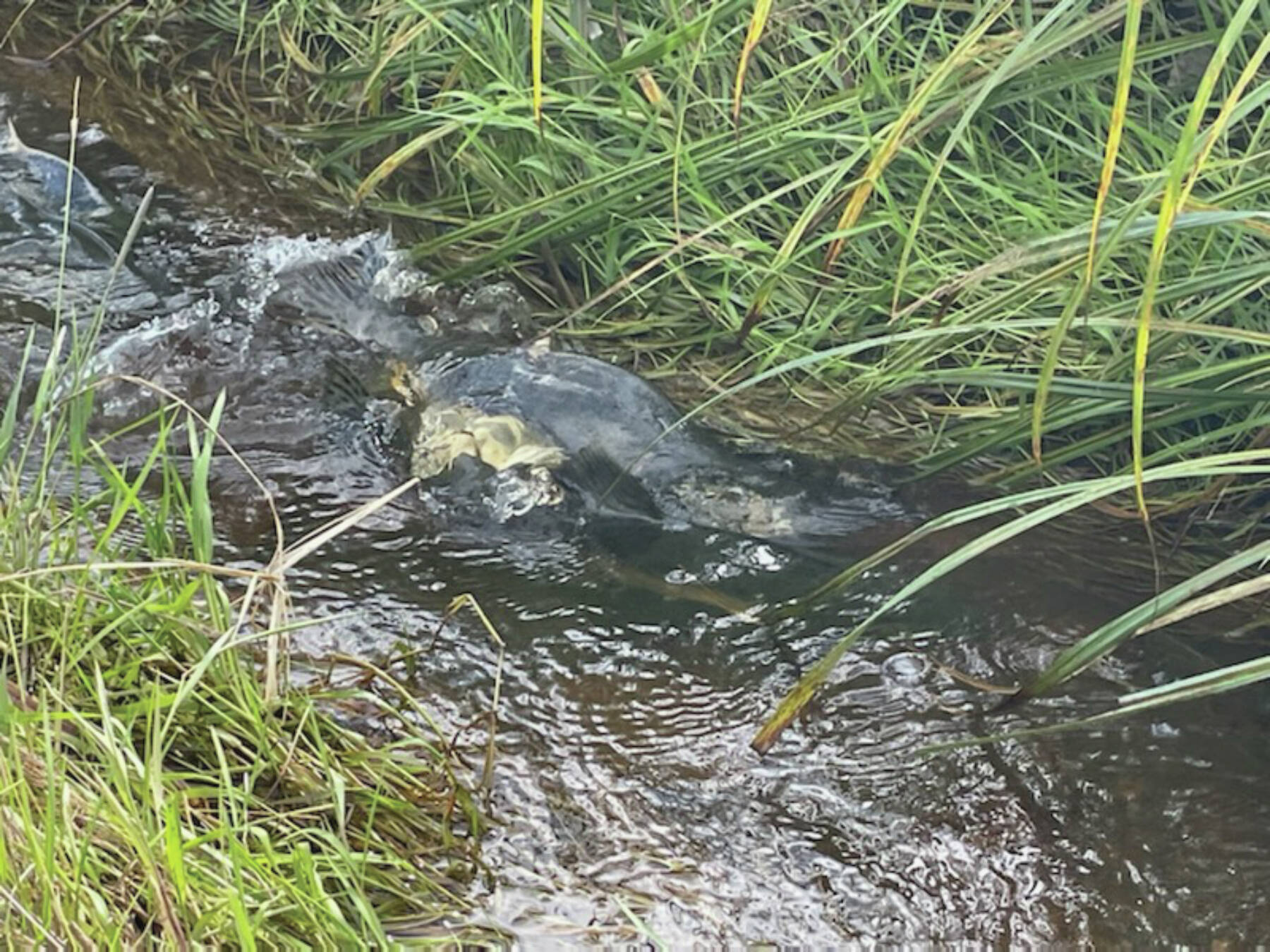On the Islands and Oceans trail to Bishop’s Beach, walkers have noticed pink salmon in the Beluga Slough drainage ditch on Bunnell Avenue. This is not the first year the occurrence has happened. A September 2017 article in the Homer News reported similar observations in several other unusual locations in the region, including Mariner Park and Diamond Creek.
When the event occurred in 2017, biologists looked at the stock and harvest levels of 2015 because pink salmon mature on a two-year-cycle. There were 6.5 million pinks harvested in lower Cook Inlet that year, nearly seven times larger than the typical harvest, according to the Homer News article from that year.
“Salmon, in general, sometimes don’t go back to the streams that they came from. This is called straying and it’s a natural thing. For the last few years we have seen pink salmon popping up in Beluga Slough,” said Glen Hollowell, finfish area management biologist for the Alaska Department of Fish and Game in Homer.
Some of these salmon are having more survival success than they have had in the past due to the carving of drainage management channels along the trails in the area, according to Hollowell.
“We have created some acceptable spawning habitat,” he said. “Some of the channels now have gravel in the bottom of them and if we don’t have a really hard winter the fish might make it there as fry and come back again in two years.”
Another surprise that Hollowell noticed last week when visiting the site was the additional presence of Dolly Varden trout among the adult salmon, likely in anticipation of eggs as a diet source.
“This is what they do in natural systems and it leads to me to think that maybe the returns have been going on for awhile and we just haven’t noticed it as obviously as the volume we are seeing this year,” Hollowell said.
In 2017, several hundred pink salmon arrived in the slough and ear bone samples were taken from those to determine where they were straying from.
“We took samples of about 300 fish and of those about 39% were wild, under 2% originated from the Tutka Bay hatchery and the others were marked from other places such as hatcheries in Prince William Sound,” he said.
Biologists can identify pink salmon strays that are produced in hatcheries because their ear bones are thermally marked with water temperature raised periodically in hatchery pens to identify them.
“If you have a naturally spawned fish from somewhere else show up here, they look just like our wild stock and we can’t determine where they’re from unless we engage in a very expensive genetic assay of the fish,” Hollowell said.
The Alaska Department of Fish and Game prefers not to remove ear bones for stock assessment until the fish are deceased. As of Thursday last week the department had not begun otolith collection.


